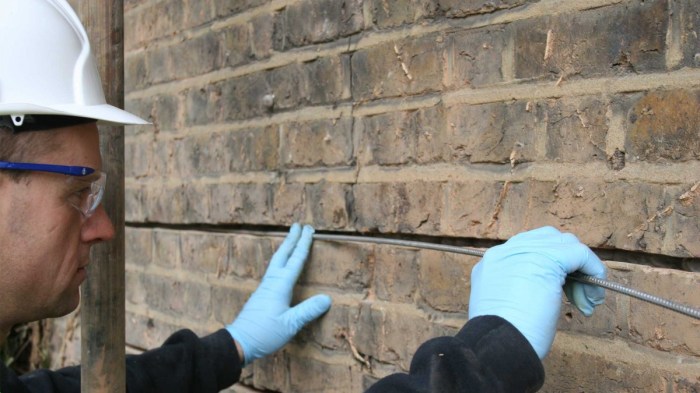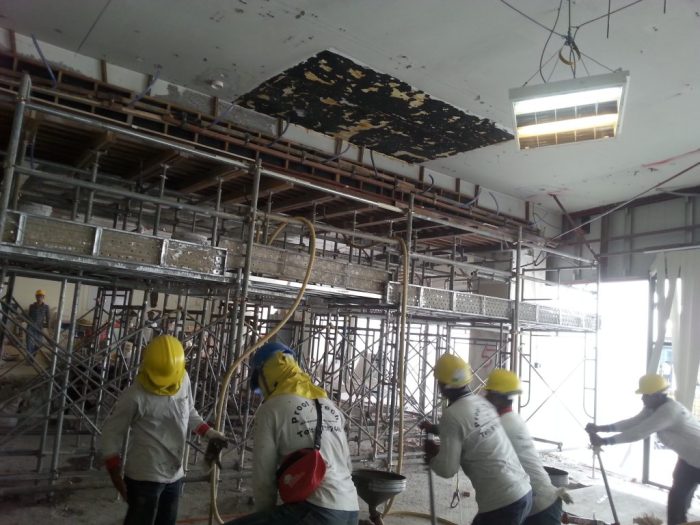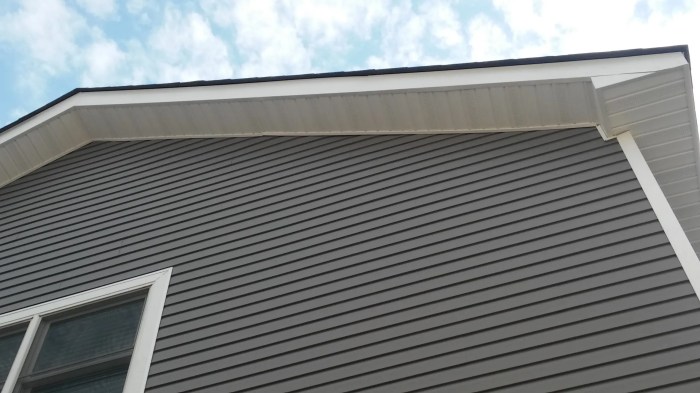Exploring Structural Repair Contractors: Essential Insights for Your Construction Needs
Diving into the world of structural repair contractors, we uncover the pivotal role they play in the construction industry. From ensuring safety to delivering quality workmanship, these professionals are instrumental in maintaining the structural integrity of buildings. Let's delve deeper into their qualifications, techniques, safety protocols, and more to gain a comprehensive understanding of their significance.
Introduction to Structural Repair Contractors

Structural repair contractors play a crucial role in the construction industry by specializing in repairing and reinforcing the structural integrity of buildings and infrastructure. They are responsible for assessing, repairing, and strengthening various structural elements to ensure the safety and stability of a building.
Importance of Hiring Qualified Structural Repair Contractors
It is essential to hire qualified structural repair contractors to ensure that the repairs are done correctly and meet industry standards. Qualified contractors have the expertise, experience, and knowledge to assess the structural issues accurately and provide effective solutions to address them.
Typical Services Offered by Structural Repair Contractors
- Foundation Repair: Structural repair contractors specialize in repairing foundations that have been damaged due to settlement, moisture issues, or other factors.
- Crack Repair: They can repair cracks in walls, floors, and ceilings to prevent further damage and ensure the structural integrity of the building.
- Reinforcement: Contractors can reinforce structural elements such as beams, columns, and walls to increase their load-bearing capacity and improve overall stability.
- Waterproofing: Structural repair contractors can also provide waterproofing solutions to protect buildings from water damage and moisture infiltration.
Qualifications and Certifications
Structural repair contractors are required to possess specific certifications and qualifications to ensure they are equipped to handle the complexities of structural repair work.
Certifications and Qualifications Required
Structural repair contractors need to have certifications such as:
- EPA Lead-Safe Certification: This certification ensures that the contractor is trained in lead-safe work practices, crucial for handling older buildings where lead paint may be present.
- OSHA 10-Hour Construction Safety Certification: This certification focuses on safety practices in the construction industry, essential for protecting both workers and clients during structural repair projects.
- Structural Repair Association Membership: Being a member of a reputable association in the structural repair industry demonstrates a commitment to upholding industry standards and best practices.
Importance of Certifications in Ensuring Quality Workmanship
Certifications play a crucial role in ensuring that structural repair contractors adhere to industry standards and guidelines. By holding relevant certifications, contractors demonstrate their expertise and knowledge in the field, providing clients with the assurance that their projects will be carried out with precision and care.
Impact of Certifications on Credibility
Having the right certifications enhances the credibility of a structural repair contractor. It showcases their dedication to ongoing education and professional development, instilling trust in clients and setting them apart as reputable professionals in the industry.
Structural Repair Techniques
When it comes to structural repair, contractors utilize various techniques to address different issues in buildings and infrastructure. These techniques are designed to strengthen and restore the integrity of structures, ensuring their longevity and safety.
Carbon Fiber Reinforcement
Carbon fiber reinforcement is a popular method used by structural repair contractors to strengthen concrete structures. Thin strips of carbon fiber sheets are applied to the surface of the structure and bonded with a high-strength epoxy resin. This technique is effective in reinforcing beams, columns, and walls, providing increased load-bearing capacity and resistance to cracking.
Epoxy Injection
Epoxy injection is another common technique used to repair cracks in concrete structures. A two-part epoxy resin is injected into the cracks under pressure, filling and sealing the voids. This method not only restores the structural integrity of the concrete but also prevents further damage from moisture infiltration and corrosion.
Steel Plate Bonding
Steel plate bonding involves the application of steel plates to strengthen and reinforce concrete elements such as slabs, beams, and walls. The steel plates are bonded to the surface using epoxy adhesives or mechanical fasteners, providing additional support and enhancing the structural capacity of the element.
Examples of Structural Issues Addressed
- Cracked concrete beams in a parking garage can be repaired using carbon fiber reinforcement to prevent further deterioration and increase load-bearing capacity.
- Leaking concrete walls in a basement can be repaired through epoxy injection to seal the cracks and prevent water infiltration.
- Weak concrete columns in a commercial building can be strengthened using steel plate bonding to enhance their structural integrity and resistance to seismic forces.
Safety Protocols and Regulations
When it comes to structural repair projects, safety protocols and regulations play a crucial role in ensuring the well-being of workers and the structural integrity of the building. Adhering to proper safety measures not only protects the workers on-site but also prevents potential accidents and further damage to the structure.
Safety Protocols for Structural Repair Contractors
- Structural repair contractors must conduct thorough safety inspections before starting any repair work to identify potential hazards.
- Proper safety gear such as helmets, gloves, and safety harnesses should be worn at all times during the repair process.
- Regular safety training and workshops should be provided to all workers to ensure they are aware of the latest safety protocols and procedures.
- Emergency response plans should be in place in case of any accidents or unforeseen circumstances during the repair work.
Regulations for Structural Repairs
- Authorities such as OSHA (Occupational Safety and Health Administration) have specific regulations that govern structural repair projects to ensure the safety of workers and the public.
- Permits and approvals may be required before commencing any structural repair work to ensure compliance with building codes and regulations.
- Inspections by regulatory bodies may be conducted periodically to ensure that the repair work meets safety standards and regulations.
Importance of Safety Measures
Adhering to safety measures in structural repair projects is of utmost importance as it not only protects the workers involved but also ensures the longevity and stability of the repaired structure. By following safety protocols and regulations, structural repair contractors can prevent accidents, injuries, and costly mistakes, ultimately leading to successful and safe repair projects.
Materials and Equipment
When it comes to structural repairs, using the right materials and equipment is crucial for ensuring the integrity and longevity of the repaired structure. High-quality materials and specialized equipment are essential for completing the repairs effectively and safely.
Essential Materials Used by Structural Repair Contractors
- Concrete: Used for repairing cracks, spalling, and other damage in concrete structures.
- Steel Reinforcement: Helps strengthen and support repaired areas in concrete structures.
- Epoxy Resin: Used for bonding, filling, and sealing cracks in concrete and masonry.
- Carbon Fiber Reinforcement: Provides additional strength to repaired structural elements.
- Grout: Used for filling voids, anchoring bolts, and repairing concrete structures.
Significance of Using High-Quality Materials in Structural Repairs
Using high-quality materials ensures that the repairs will be durable, resistant to future damage, and meet safety standards. Inferior materials can lead to premature failure of the repairs, compromising the overall stability of the structure.
Types of Equipment Needed for Various Structural Repair Tasks
- Jackhammers: Used for breaking up concrete and masonry during demolition.
- Diamond Blades: Essential for cutting through hard materials like concrete and steel.
- Injection Pumps: Used for injecting epoxy resin or grout into cracks and voids.
- Mixers: Required for mixing concrete, grout, and other repair materials.
- Rebar Cutters and Benders: Used for cutting and shaping steel reinforcement.
Closing Summary

In conclusion, structural repair contractors are the unsung heroes of the construction world, working tirelessly to safeguard buildings and structures. By adhering to strict safety measures, utilizing top-notch materials, and employing cutting-edge techniques, these experts ensure that our built environment remains strong and secure.
As you embark on your next construction project, remember the vital role that structural repair contractors play in upholding the structural integrity of your buildings.
General Inquiries
What qualifications are required to become a structural repair contractor?
To become a structural repair contractor, individuals typically need certifications in structural repair techniques, along with relevant experience in the construction industry.
What are some common structural repair techniques used by contractors?
Common techniques include carbon fiber reinforcement, epoxy injection, and crack stitching, among others.
How do certifications impact the credibility of a structural repair contractor?
Certifications demonstrate a contractor's knowledge and expertise in structural repairs, enhancing their credibility and assuring clients of quality work.




